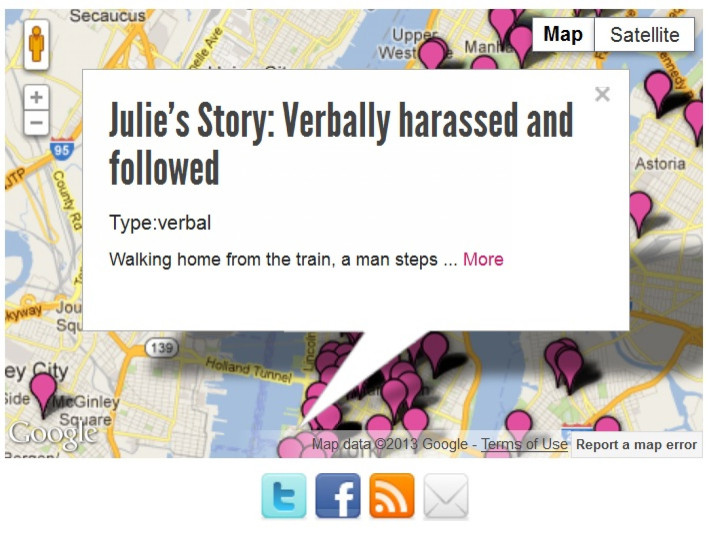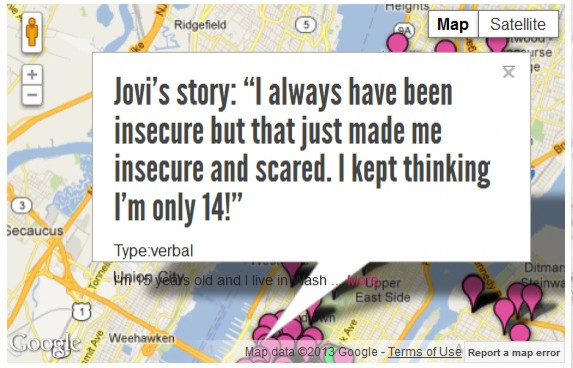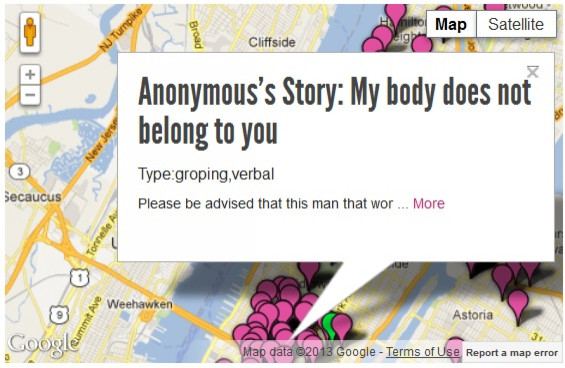To Catch A Pervert: Hollaback IPhone App Will Let Victims Report Street Harassment

New York subway gropers are about to be derailed.
Hollaback, the anti-street-harassment organization, has been awarded a $40,000 grant by the John S. and James L. Knight Foundation to develop a mobile app that will allow people to report street harassment directly to authorities. The app will be the first of its kind, according to Emily May, Hollaback’s co-founder and executive director, who said the organization already has an arrangement with the New York City Council.
“We’re taking our iPhone app and connecting it with the city so people can make a report about street harassment directly,” May said in a phone interview.
The grant was made under the auspices of the Knight Prototype Fund, which aims to foster innovation in journalism. May said the funds will go toward developing the app’s New York City integration, with the aim of replicating the model in cities around the world.
Hollaback’s mobile app is already integrated with a Google Map, through which victims can post details of when and where incidents of street harassment occur. The map’s geo tags are linked to blog posts on the Hollaback website, which are categorized by harassment type -- verbal, groping, etc. -- and are accompanied by often-heartbreaking stories of women and girls who are harassed, intimidated, and victimized on public streets.
“I was walking home at 10 p.m. when a guy asked for my number ‘slyly’ and upon my refusal, he became very verbally abusive,” reads one recent post. “If I hadn’t escaped into my locked building, I think he would have been physical too.”

Since it was founded in 2005, Hollaback has served as an online hub where victims of street harassment can tell their stories and upload pictures of alleged perpetrators. May and her six co-founders were inspired to create the site after hearing about a well-publicized case in which a man masturbated in front of a young girl on the New York subway. Rather than sit back and do nothing, the girl took a photograph of her harasser and went to the police. When they were no help, she uploaded the photo to Flickr.
That simple concept -- turning the table on perverts, as it were -- allowed Hollaback to mushroom into a worldwide network of websites dedicated to empowering street-harassment victims with mobile technology. The organization became an official nonprofit organization in 2010. May said street harassment is an issue that had long been swept under the rug, as many victims are either afraid to speak out or not taken seriously when they do. But she said the sheer number of stories and photos collected via the Hollaback network prove that street harassment is common in cities around the world.
“We want people to know that this is not just a case of there being a few bad seeds out there,” May said. “This is [a] pervasive problem in our society. People are afraid to go to work. Kids don’t want to walk to school.”

And it’s not just an urban problem. The stereotypes of burly construction workers shouting catcalls and sweaty subway gropers may perpetuate the notion that New York girls bear the brunt of street harassment, but May noted that urban density only creates the illusion that street harassment is more pervasive in those areas. The problem is common in rural communities as well, she said.
“My little sister lives in a tiny town, and she gets harassed when she’s walking through a Wal-Mart parking lot,” May said.
May said she and Hollaback are hoping to raise awareness about street harassment -- in much the same way that recent years have seen an increased awareness of workplace harassment and school bullying. Asked whether there’s a line that separates harmless compliments from street harassment, May replied that you know harassment when you see it.
“When someone is doing it to intimidate, that’s harassment,” she said. “People should be able to feel comfortable when they walk down the street.”
© Copyright IBTimes 2024. All rights reserved.






















